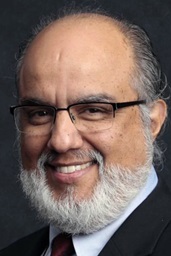“Lin-sanity” took hold of my Bronx living room last Friday night.
Like many New Yorkers, we were cheering on the unexpected rising star of the Knicks. Jeremy Lin, a Harvard grad who had been nearly invisible before as an NBA player, was defending, dribbling and shooting his way to a career-high 38 points in that night’s home game against the Lakers.
It wasn’t until the next day that I thought about the fact that the couple who had joined us for dinner – our fellow cheerleaders for this new basketball star of Taiwan origin – were from families who had immigrated from Brazil and Guyana. The beauty of it all made me smile.
To me, Jeremy Lin is an indicator of both a growing U.S. ethnic diversity that no longer is confined to New York and California and the continuing way in which racial stereotypes are being shattered as our multicultural society gains acceptance, particularly among young people.
The fanfare over Jeremy Lin has not yet abated. By Wednesday this week, the rejuvenated Knicks were on a seven-game winning streak and Lin had set an NBA record for the most points (109) in the first four starts.
In Lin’s case, what has been particularly intriguing is the side focus on his Christian faith. The New York Times has had at least three stories in the past week on the faith issue, including one about Asian-American young people who had gathered in a bar to watch Friday’s game. “If Lin’s storybook week captured the imagination of New York City and the wider sports world, it hit the community of Christian Asia-Americans like a lightning bolt,” writes Times reporter Sam Dolnick.
Even more interesting was a first-person column in the sports section, in which reporter Michael Luo writes about his common ground with Lin as an Asian-American, a Harvard grad and a fellow believer. “An Asian-American Christian? What’s that?” he acknowledges. “Many in this country have probably never heard of this subcategory on the religious spectrum.”
United Methodists have because we have our own Asian-American congregations. But, the problem, in my opinion, is that our denomination hasn’t done nearly enough to reach that population – or any other U.S. ethnic minority group, including African Americans.
Our expanding membership base outside the United States is considered a cause for celebration. Why are we so resistant to diversifying – and thus increasing — the shrinking U.S. membership? Yes, we pay lip service to diversity through a few noteworthy plans or projects targeted to specific groups. But where is the overall strategy? Where is the monetary commitment? Where is the spiritual mandate?
United Methodist leaders are absorbed right now over how to restructure church operations to achieve denominational goals, with a proposed plan set for discussion and a vote at the upcoming 2012 General Conference in Tampa, Fla.
Representatives of United Methodist ethnic/racial ministries say there was little or no consultation with their groups regarding the restructure proposal. They are concerned the plan will render them even more invisible than they already feel.
Jeremy Lin used to be invisible to sports fans and the NBA. Now, he’s not. How can we make the need for greater diversity visible to the church?
Like what you're reading? Support the ministry of UM News! Your support ensures the latest denominational news, dynamic stories and informative articles will continue to connect our global community. Make a tax-deductible donation at ResourceUMC.org/GiveUMCom.



